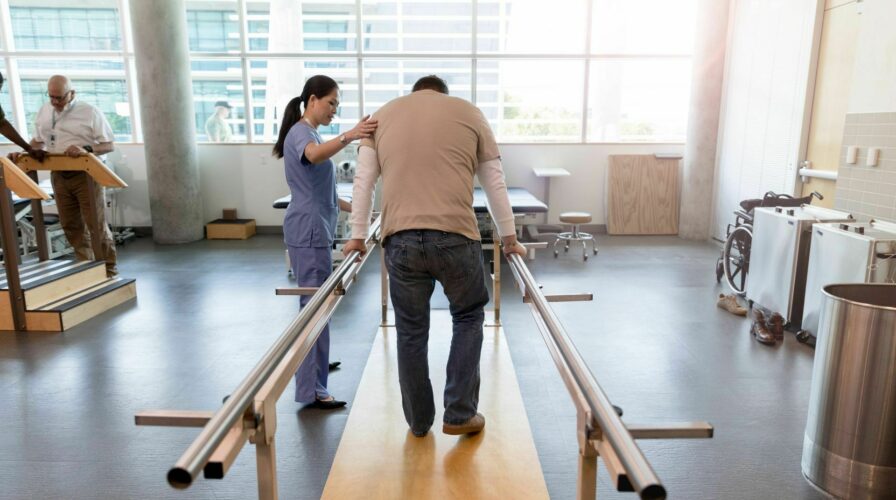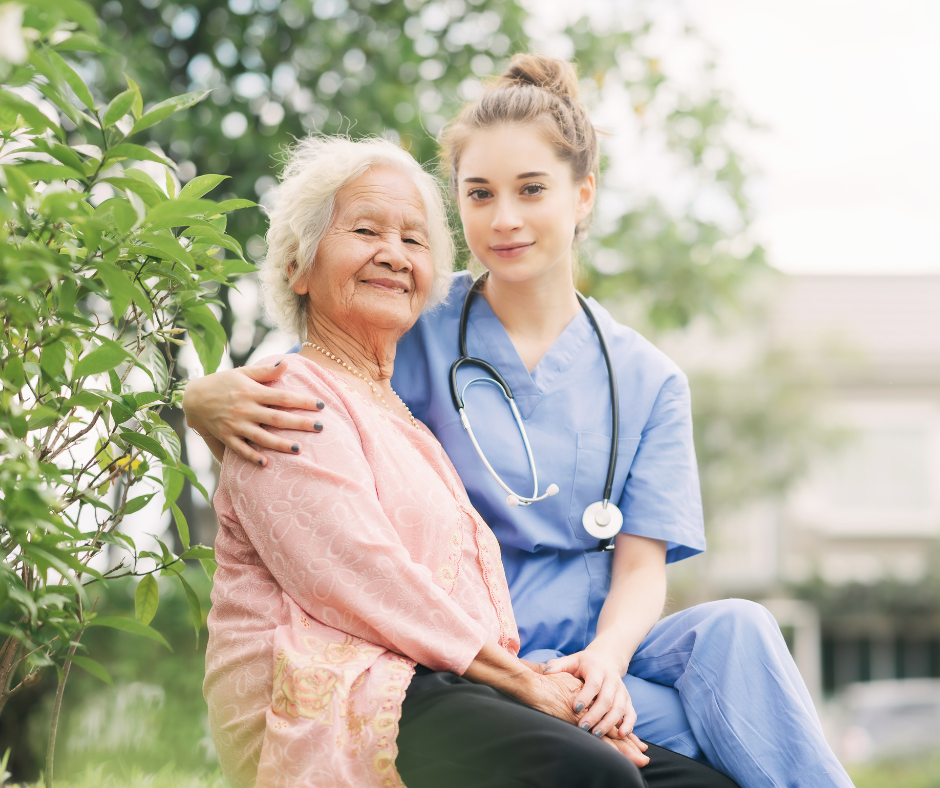
Recovering from a Stroke
During a stroke or cerebrovascular accident (or CVA), a blood clot or rupture reduces or stops blood from carrying oxygen and nutrients to the brain. A stroke causes damage to brain cells and may impact a patient’s ability to move, shower and get ready for the day, drive, and socialize with loved ones.
For many patients in stroke recovery, the journey toward rehabilitation can feel overwhelming, but at Reunion, you’ll never have to make that journey alone. Our interdisciplinary team will work together to curate a treatment plan around your needs and goals, then walk alongside you on the path toward healing.
Why Inpatient Rehabilitation?
If you or a loved one need support during stroke recovery, your doctor may recommend treatment in an inpatient rehabilitation hospital (or IRH) or a skilled nursing facility (or SNF). While both IRHs and SNFs provide patients with occupational, physical, and speech therapy, patients in skilled nursing facilities work with therapists for three to five hours a week, and patients in IRHs (such as Reunion), work with therapists for fifteen intensive hours each week.
Medical studies have shown that patients who recover in an IRH live longer and have fewer ER visits and hospitalizations than patients treated in an SNF. IRH patients also return to the community sooner than SNF patients. IRH stroke patients, for example, are discharged 17 days earlier and are able to delay hospital readmission for three months longer than SNF stroke patients. Ultimately, these IRH patients also have a 14% lower mortality rate than SNF patients.
What to Expect in Inpatient Rehabilitation
If you choose to recover at a Reunion Rehabilitation Hospital, our team will provide you with three types of therapy: physical, occupational, and speech therapy. During admission, they will conduct an evaluation of your current physical limitations and needs. The day after admission, you will begin 60-90 minutes therapy sessions completing evidence-based techniques designed to improve speaking and mobility abilities impacted by CVA.
Physical Therapy
During stroke recovery, you will use physical therapy to increase your range of motion, strength, and balance, and decrease muscle spasms and pain. Reunion therapists use both a pulley system to help patients strengthen their upper body and improve their range of motion, and an Omni Cycle—a stationary bike with motor-assist technology—to help patients strengthen their legs. In functional electrical stimulation therapy (or FES therapy), therapists use pulses of electrical currents to stimulate nerves and re-educate weak or paralyzed muscles.
Occupational Therapy
In occupational therapy, you will learn how to complete specific tasks that increase your independence. You may practice getting up from a chair, walking, and/or climbing stairs to train your muscles to complete activities of daily living. You may also practice reaching for items to strengthen your arm muscles. Additionally, occupational therapy exercises at Reunion often include gait training, in which you learn to walk on different surfaces using a partial weight-bearing treadmill (called the Biodex NxStep Unweighing System), and therapeutic stairs.
Speech Therapy
Many patients in stroke recovery struggle with speaking, reading, writing, and the ability to swallow. If you or a loved one struggle with communication, Reunion offers cognitive therapy activities (such as card matching) and other memory and word-recall games. Patients may also use Synchrony—an electrical stimulation treatment—that supports muscle function and tone in the tongue and lips.
After Rehab
As you leave Reunion for home or another treatment facility, you should teach your friends and family to recognize the signs of a stroke using the acronym: BE FAST (balance, eyes, face, arm, speech, time). Studies show that 25% of first-time stroke survivors suffer a second stroke, so it is important that you educate your family so they can provide you with immediate medical attention. It is also important that you maintain physical activity, a healthy diet, and communication with loved ones to rebuild your independence and self-confidence.
At Reunion, this is our ultimate treatment goal: we empower you to return to your community with as much independence as possible. After all, Reunion is both our namesake and our mission. We work side-by-side with you so you can return to the people and experiences that make your life meaningful.
How inpatient rehabilitation can help stroke survivors
With special training in stroke rehabilitation, our interdisciplinary teams, work together every day to create a comprehensive, results-focused, individualized stroke program that incorporates therapeutic modalities specialized for stroke patients.

More Articles